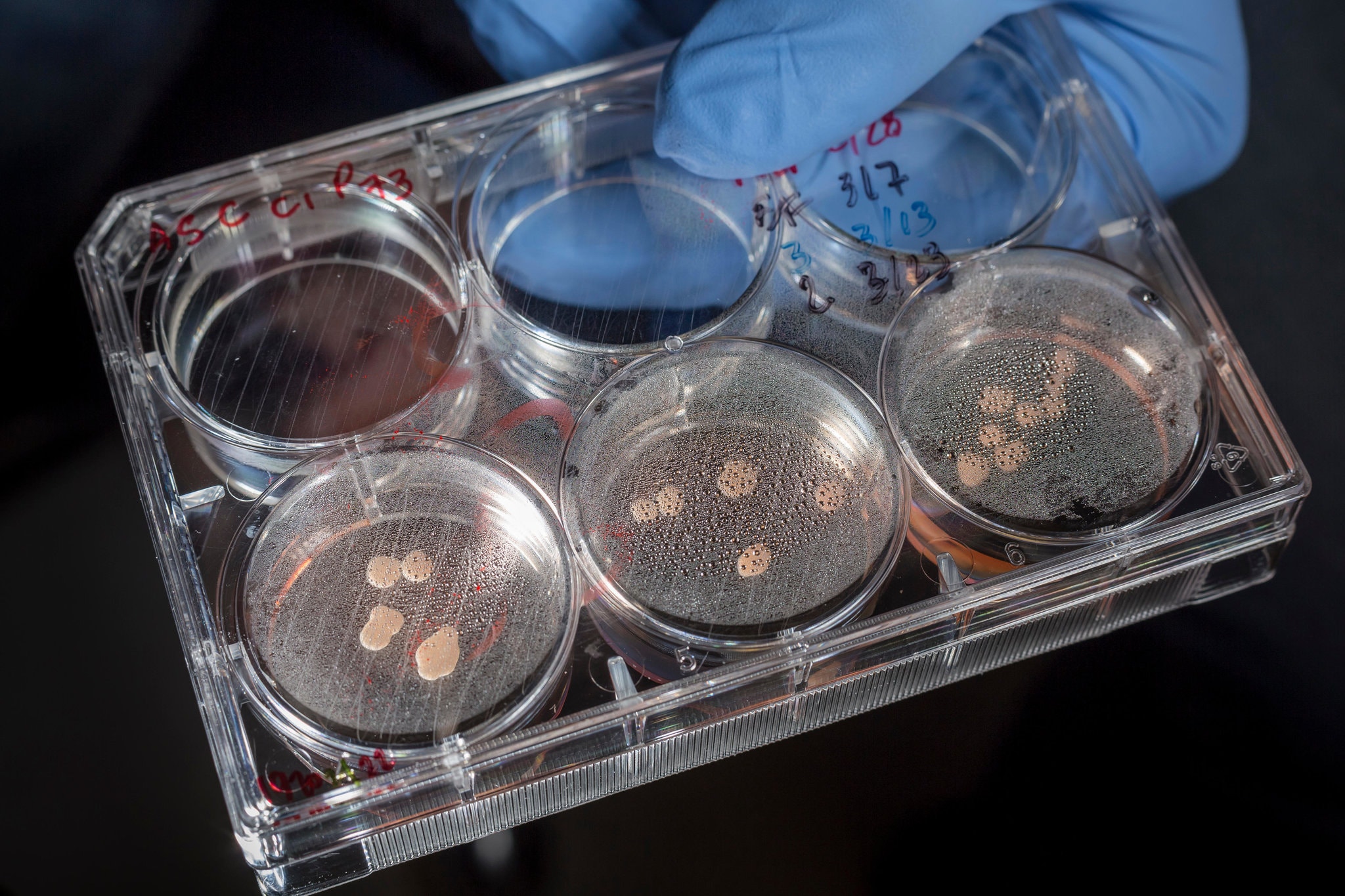Scientists have grown clusters of nerve cells and sent them to the ISS

In one of the experiments, specialists from the University of California began to grow "clusters" of the human brain from stem cells. Then they were collected and sent to the ISS - only a few hundred. Grown clusters, or rather, brain organoids, reach the size of a pin head. In each such organoid, several hundred thousand cells.
Different types of cells were grouped into various organoids. In July of this year, NASA sent organoids with a rocket aboard the ISS space station. This was done in order to find out how brain cells will behave in zero gravity.
According to one of the authors of the project, organoids enclosed in metal capsules receive nutrients, which contributes to their rapid division. Now organoids have already grown a little, and scientists have recorded electrical signals, complex patterns of signals, indicating that the cells are working smoothly. Signals are similar to those that arise in the growing brain of embryos.
The research team says that no one really thought that this experiment would show such interesting results. At the same time, you should not think that in reality, scientists have grown a real brain, albeit a small one. No, these are only individual elements of the brain.
The purpose of all this is to study what happens to the human brain in the early stages of embryo development. As part of the continuation of the study, scientists placed the formed organelles inside arachnids, giving them the opportunity to exchange signals.
The project and its results have troubled the scientific community. Dr. Christoph Koch, spokeswoman for the Seattle-based Allen Brain Institute, said the further the project progresses, the more likely it is that miniature rudiments of the brain can form from organoids, which can experience pain, agony, and distress.
However, it is extremely difficult to predict the results of an experiment, because the brain is a very complex organ. The human brain is especially complex, it is different from the brain of animals. For example, people have learned to treat brain diseases in some animals, including primates, but this experience cannot be extended to humans - the structure is too different.
The brain itself is so complex that scientists can now only make assumptions about how everything works, based on the results of experiments with individual organoids. But all the results obtained are just the tip of the iceberg, not even the top, but a scratch on the surface of the top.
As for the experiment, it is unusual that organoids build themselves. Being placed in optimal conditions, the cells gradually form increasingly complex structures.

According to the authors of the experiment, billions of neurons are not needed for the nascent brain to generate signal patterns characteristic of brain activity in embryos. A few hundred thousand cells are enough - they will act synchronously after exceeding a certain critical mass.
In order to study all this, scientists plan to increase the size of the organoids, making them more complex and large. As it turned out, cells of the immune system can help. They help structure synapses, helping the overall structure of the brain develop.
As for the robots mentioned above, scientists have achieved some success. They placed the organelles in arachnid systems that are able to translate the electrical signals of cells into commands for the movement of the "legs" of the robot.
The robot eventually learned to determine that it was approaching the wall - for this, he used sensors that evaluated its location. When the robot approached the wall, the computer transmitted signals to the organoid in the form of electrical impulses and the robot reacted in a certain way. The experimental results are still being analyzed.
Using the example of organoids, scientists plan to explain how a particular part of the brain works. Moreover, some experts who are familiar with the results of the experiment, believe that organoids, despite the apparent simplicity, are more complex structures than is believed.
If this is so, and scientists have come close to the possibility of creating the rudiments of consciousness, this causes a number of ethical problems. So, if organoids continue to develop, and scientists destroy them, this may mean the possibility of destroying consciousness, even if it is in its infancy.
The authors of the experiment, however, do not consider such a scenario realistic. According to them, over the past few days, organoids have not increased in size. In addition, being placed in a single nutrient medium, they do not try to cluster together. Therefore, it is too early to think about the ethics of the experiment - all this is in its infancy.
All Articles